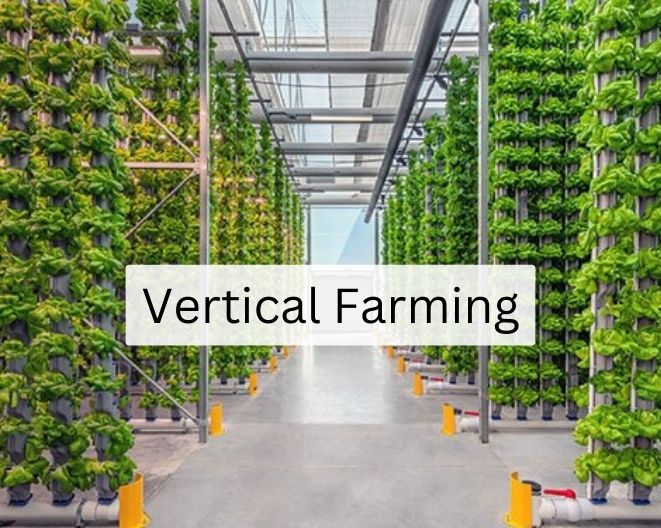In the ever-expanding urban landscapes of the 21st century, the traditional boundaries of agriculture are being redefined. One groundbreaking solution that has emerged to address the challenges of space constraints and food sustainability in urban environments is a vertical planter. This blog post will explore the concept of vertical farming, its potential benefits, and the transformative impact it could have on the future of urban agriculture.
Understanding Vertical Planter
Vertical Planter
A vertical planter is revolutionary to agriculture as it involves growing crops in vertically stacked layers or vertically inclined surfaces. This method utilizes controlled environments, often indoors, where temperature, light, and nutrients are precisely regulated.
Vertical Planting Technologies
a. Hydroponics:
Vertical farms often employ hydroponic systems, where plants grow in nutrient-rich water without soil. This method allows for optimal nutrient absorption and water conservation.
b. Aeroponics:
Aeroponic systems involve growing plants in an air or mist environment, with nutrients delivered through a fine mist. This technology promotes faster growth and efficient nutrient utilization.
c. Aquaponics:
Combining aquaculture (fish farming) with hydroponics, aquaponics creates a symbiotic relationship between fish and plants. The fish waste provides nutrients for the plants, and the plants help purify the water for the fish.
The Future Unveiled: Potential Benefits of Vertical Planter
1. Space Efficiency
Vertical planter maximizes the use of available space, making it well-suited for densely populated urban areas. By stacking crops vertically, these farms can produce significantly more food per square foot compared to traditional horizontal farms.
2. Year-Round Crop Production
Controlled environments in vertical farms allow for year-round crop production. This consistent output addresses seasonal limitations and ensures a more stable and reliable food supply.
3. Water Conservation
Hydroponic and aeroponic systems used in a vertical planter are more water-efficient compared to traditional soil-based agriculture. Water is recirculated and reused, reducing overall consumption and addressing water scarcity concerns.
4. Reduced Carbon Footprint
Vertical farms located in or near urban centers reduce the need for long-distance transportation of produce. This localization of food production can significantly decrease the carbon footprint associated with the transportation of fruits and vegetables.
Challenges on the Vertical Horizon
1. High Initial Costs
The implementation of vertical planting systems requires substantial initial investment in infrastructure, technology, and energy-efficient lighting. While costs are expected to decrease with advancements, the financial barrier remains a challenge.
2. Energy Consumption
Maintaining the controlled environments essential for vertical farming, including artificial lighting and climate control, demands a considerable amount of energy. Developing sustainable energy solutions is crucial to mitigate the environmental impact.
3. Technological Advancements
Continued research and development are needed to optimize vertical farming technologies further. Innovations for efficient lighting, automation, and crop management systems will be instrumental in overcoming existing challenges.
Realizing the Vision: Vertical Planter Success Stories
AeroFarms, Newark, USA: AeroFarms, based in Newark, New Jersey, is a vertical planting company that has transformed an old steel mill into a state-of-the-art vertical farm. Using aeroponic technology, AeroFarms produces leafy greens with impressive efficiency and sustainability.
Sky Greens, Singapore: In the space-constrained urban environment of Singapore, Sky Greens has implemented vertical farming systems using rotating A-frame towers. This innovative approach allows for efficient space utilization and year-round production of vegetables.
Spread Co., Ltd., Japan: Japan, with its limited arable land, has embraced vertical planting. Spread Co., Ltd., operates one of the world’s largest vertical farms, utilizing automated systems and LED lighting to cultivate a variety of crops.
The Path Forward: Embracing a Vertical Planter in Urban Agriculture
Investment in Research and Development
Continued investment in research and development is crucial for refining and advancing vertical farming technologies. This includes improving energy efficiency, optimizing crop yields, and developing sustainable practices.
Educating and Engaging the Public
Raising awareness and educating the public about the benefits of vertical planting is essential for fostering acceptance and support. Understanding the role of vertical farming in sustainable urban agriculture can lead to increased adoption and investment.
Collaboration Across Industries
Collaboration between the agricultural, technological, and urban planning sectors is vital for the success of a vertical planter. Integrated efforts can address challenges more comprehensively and create synergies that drive the industry forward.
Policy Support and Incentives
Governments and policymakers can play a crucial role by providing support and incentives for vertical farming initiatives. This may include financial incentives, streamlined regulatory processes, and policies that promote sustainable urban agriculture practices.
Conclusion
As we unveil the future of urban agriculture, vertical planter stands out as a beacon of innovation and possibility. The ability to grow food in vertical spaces not only addresses the challenges of urbanization but also presents a sustainable solution to feed the growing global population. While challenges persist, the potential benefits of vertical farming are too significant to ignore.
Embracing this transformative approach requires a collective effort from farmers, researchers, policymakers, and the public. By investing in research, fostering public awareness, and creating a supportive policy environment, we can pave the way for a future where vertical farms contribute substantially to the resilience and sustainability of our urban food systems. Vertical planting is not just a cultivation method; it’s a vertical leap into a more sustainable and food-secure future.





